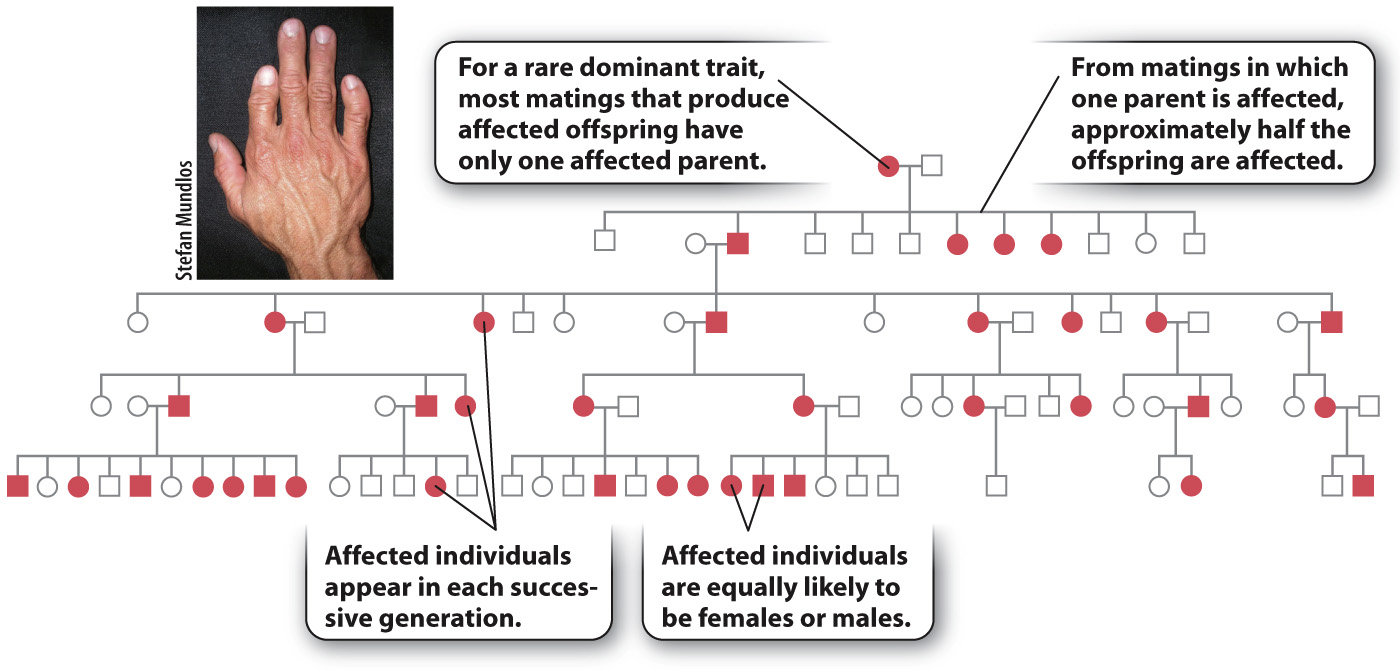Dominant traits appear in every generation.
The pedigree shown in Fig. 16.18 is for a rare dominant trait, brachydactyly, in which the middle long bone in the fingers fails to grow and therefore the fingers remain very short. This pedigree, published in 1905, was the first demonstration of dominant Mendelian inheritance in humans. This particular form of brachydactyly results from a mutation in a gene whose normal product is a protein involved in cartilage formation, which is necessary for bone growth.

These are the features of the pedigree that immediately suggest dominant inheritance:
Affected individuals are equally likely to be females or males.
Most matings that produce affected offspring have only one affected parent. This occurs because the brachydactyly trait is rare, and therefore a mating between two affected individuals is extremely unlikely.
Among matings in which one parent is affected, approximately half the offspring are affected.
If a dominant trait is rare, then affected individuals will almost always be heterozygous (Aa), not homozyogous (AA). In a mating in which one parent is heterozygous for the dominant gene (Aa) and the other is homozygous recessive (aa), half the offspring are expected to be heterozygous (Aa) and the other half homozygous recessive (aa).